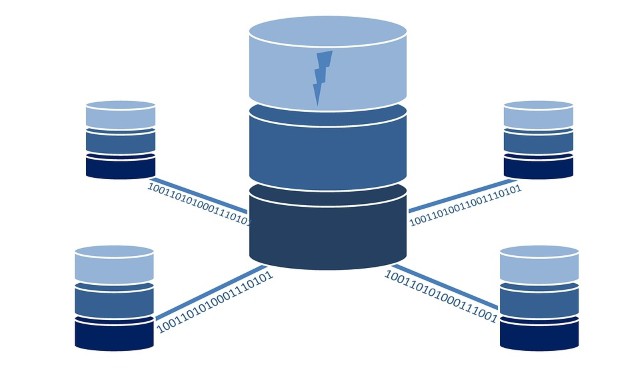For any business; irrespective of being small or big, a good website and a strong database management system is mandatory now to become successful. Regardless of whatever other marketing methodologies you adopt, it is important to get your internet customers to find your business website through Google search to build integrity and trust. On the other hand, data is considered to be one of the most valuable assets for any business, and an appropriate database management practice will aid in developing true business insights for success planning. Let’s explore these two crucial aspects from a startup’s point of view.
Making a business website
As we’ve seen above, the website is essential if you are selling something online or trying to share your service details with the potential clients. A website can now sever as not only your business’ virtual front office but an end-to-end business platform including sales and customer service everything. So, a good website should testify to your experience, background, and industrial value to project your credibility before the potential customers to make buying decisions. But how long does it take to build a website?

Nowadays, creating a business website for start-up businesses is much easier than before. If you have a basic technology flair, one can do it yourself and cut the costs, but it is always advisable to hire an expert if you can afford it. With a lot of content management systems and customized design and development tools available, website building is a much easier and enjoyable task now. Here are the steps to follow.
. Define your website purpose
The first step is to define what your website is for clearly. Apart from sharing your company information to the clients, you need to specify whether it needs to serve as a blog, a selling platform, payment gateway, or to facilitate user-generated activities. Knowing this in details will help you to choose adequate methodologies and technologies for website building.
. Choose a good CMS
In light of the purpose of your website, you now have plenty of choices in software including many free options. You can try WordPress, Joomla, E-Commerce, etc. and further thousands of handy plug-ins and themes in each to meet any design and functional needs of your website.
. Find a good web hosting provider.
Once you decide on methodology and platform to develop, next search for a good web host where your site will be stored for the visitors to access, the choice of an ideal hosting service may depend on the development platform or language you choose and the size of hosting needed to be decided based on the required speed and the expected number of visitors. It is deal to look for professional providers which who you can start with the baseline packages as a start-up then scale up from time to time when needed.
. Resource directory
Beyond the themes and templates, you require many other add-ons too to bring in essential functionalities of your website. There are many free resources; however, those which you pay for are much better. You may choose CMS like WordPress or Joomla and scour through the possible plug-ins and add-ons to choose from.
. Organize the website
As RemoteDBA.com points out, you have to think about the usage and look of your website at this stage. Your logo, visual, menu, navigation everything needed to be planned and also define the content to be put on each page. The standard templates of CMS for content management systems have a very structured approach to organizing the website.
. Develop website content
It could be one of the toughest, but most critical parts of website building. Your content should be not only informative, but also compelling to the readers to convert them into business. Content needed to be prepared to share true and inspiring information but from an advertising point of view. Content is not just text, but you need images and graphics also on your websites now.
Even when you use CMS for website development, it is preferable to hire an experienced Web developer who can build it the best on your behalf.
Building business databases
Any business contact point now can generate data, which is not only valuable for a historical analysis of the performance but also crucial in deciding the future of a business. Abundant data is available to businesses, which needed to be utilized creatively and productively for businesses to excel. Let’s discuss various aspects of building a startup database.
1. Audit your incoming data
Draw out a picture of your actual customer base and define what characteristics they tend to share as crucial business data to you. Check what information are most essential to you and what all you are missing.
2. Structure your data
As recognizing different marketing, segments helps the organization to set up campaigns, tracking different stages in the sales cycle of the customers is essential. CMS like WordPress and Joomla have default sales tracking systems. To structure the data, create customized rules to ensure consistency.
3. Build the database
Database structuring is not a one-time process, but you have to keep on building it by:
- Data bought in
- Sales related data
- Campaign specific data like mailing list and subscriptions.
- Data from social media like Facebook, Twitter, or LinkedIn.
4. Set up a regular database maintenance plan
It is estimated that typical business data across the sectors may decay at a rate of about 25% yearly and if you haven’t looked at the data for two years, about 50% of your data will be outdated. So, it is essential for the organization to roll a data update program at least every six months or so.
5. Choose an appropriate database management system
Choosing a right fitting DBMS (database management system) for your business purpose is the key to success in long-term database management. DBMS helps to manage the interactions between your business applications through an underlying database. A good DBMS will not only help you store upscale data over time, but will ensure that the correct data is made available as requested by the user groups when needed, and in the desired form.
Looking beyond the existing systems, we may expect a lot more changes in web designing and database management in the next couple of years to come. So, for startups, which are planning to establish in the coming years, it is important to look into future to incorporate future-ready platforms to meet the technology challenges of the coming times.



